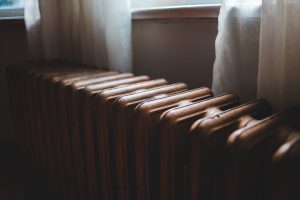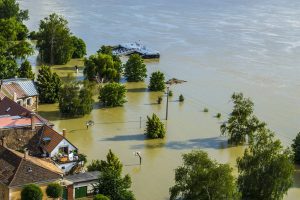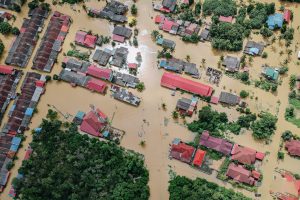“Rebuild, Restore, and Revive Your Home After a Flood with These 5 Tips!”
Introduction
Floods can be devastating to your home and your family. The damage can be extensive and the recovery process can be long and difficult. However, there are ways to revive your flood-ravaged home and get it back to its pre-flood condition. In this article, we will discuss five ways to revive your flood-ravaged home. From assessing the damage to taking steps to prevent future flooding, these tips will help you get your home back to its pre-flood condition.
How to Salvage Your Belongings After a Flood
After a flood, it can be difficult to know where to start when it comes to salvaging your belongings. It can be a daunting task, but it is possible to salvage many of your possessions and restore them to their former glory. Here are some tips to help you get started.
First, assess the damage. Take a look at the items that have been affected by the flood and determine what can be salvaged and what needs to be thrown away. If the item is made of metal, wood, or plastic, it may be possible to restore it. However, if the item is made of fabric or paper, it may be too damaged to save.
Second, take action. If the item is salvageable, start by cleaning it with a mild detergent and warm water. If the item is made of metal, you may need to use a rust remover to remove any corrosion. If the item is made of wood, you may need to sand it down and refinish it. If the item is made of fabric, you may need to use a special cleaning solution to remove any dirt or stains.
Third, dry the item. Once the item is clean, it is important to dry it completely. If the item is made of fabric, you may need to hang it up to dry. If the item is made of wood, you may need to use a fan to help speed up the drying process.
Finally, restore the item. Once the item is dry, you can begin to restore it to its former glory. If the item is made of metal, you may need to use a metal polish to restore its shine. If the item is made of wood, you may need to use a wood stain to restore its color. If the item is made of fabric, you may need to use a fabric dye to restore its color.
Salvaging your belongings after a flood can be a difficult and time-consuming process. However, with patience and perseverance, you can restore many of your possessions and bring them back to life. Don’t give up hope – you can salvage your belongings and make them look as good as new!
Tips for Cleaning and Sanitizing Your Home After a Flood
1. Start by removing all wet items from the home. This includes furniture, carpets, and other items that have been affected by the flood. Make sure to wear protective clothing and gloves when handling these items.
2. Disinfect all surfaces that have been affected by the flood. This includes walls, floors, and countertops. Use a mixture of bleach and water to disinfect these surfaces. Make sure to wear protective clothing and gloves when handling these items.
3. Clean all hard surfaces with a mixture of soap and water. This includes floors, walls, and countertops. Make sure to wear protective clothing and gloves when handling these items.
4. Vacuum all carpets and rugs that have been affected by the flood. This will help to remove any dirt and debris that may have been brought in by the floodwaters.
5. Disinfect all fabrics that have been affected by the flood. This includes furniture, curtains, and other fabrics. Use a mixture of bleach and water to disinfect these fabrics. Make sure to wear protective clothing and gloves when handling these items.
6. Clean all windows and window frames that have been affected by the flood. Use a mixture of soap and water to clean these surfaces. Make sure to wear protective clothing and gloves when handling these items.
7. Disinfect all appliances that have been affected by the flood. This includes refrigerators, stoves, and other appliances. Use a mixture of bleach and water to disinfect these appliances. Make sure to wear protective clothing and gloves when handling these items.
8. Disinfect all plumbing fixtures that have been affected by the flood. This includes sinks, toilets, and other plumbing fixtures. Use a mixture of bleach and water to disinfect these fixtures. Make sure to wear protective clothing and gloves when handling these items.
Cleaning and sanitizing your home after a flood can be a daunting task. However, with the right safety precautions and cleaning supplies, you can make sure that your home is safe and clean again. Taking the time to properly clean and sanitize your home after a flood will help to ensure that your family is safe and healthy.
Strategies for Dealing with Mold and Mildew After a Flood
After a flood, mold and mildew can quickly become a major problem. Left unchecked, these fungi can cause serious health issues and damage to your home. Fortunately, there are several strategies you can use to deal with mold and mildew after a flood.
The first step is to identify the source of the moisture. If the flooding was caused by a broken pipe or other plumbing issue, it’s important to have it repaired as soon as possible. If the flooding was caused by a natural disaster, you may need to wait until the water recedes before you can identify the source.
Once the source of the moisture has been identified, it’s important to take steps to dry out the affected area. This can be done by using fans, dehumidifiers, and other methods. It’s also important to open windows and doors to allow for air circulation.
The next step is to clean and disinfect the affected area. This can be done with a mixture of bleach and water. It’s important to wear protective gear, such as gloves and a face mask, when cleaning.
Finally, it’s important to take steps to prevent mold and mildew from returning. This can be done by using a dehumidifier to keep the humidity levels in the home low. It’s also important to regularly inspect the area for signs of mold and mildew.
Dealing with mold and mildew after a flood can be a daunting task. However, with the right strategies, you can protect your home and your health. By identifying the source of the moisture, drying out the affected area, cleaning and disinfecting, and taking steps to prevent mold and mildew from returning, you can ensure that your home is safe and healthy.
How to Repair and Restore Your Home After a Flood
Floods can be devastating, leaving behind a trail of destruction and chaos. But with the right approach, you can repair and restore your home after a flood. Here are some tips to help you get started.
1. Safety First: Before you start any repairs, make sure the area is safe. Check for any structural damage, gas leaks, or electrical hazards. If you’re not sure, contact a professional to inspect the area.
2. Remove the Water: The first step in restoring your home is to remove the water. This can be done with a wet/dry vacuum, a sump pump, or a combination of both. Make sure to wear protective gear, such as rubber gloves and boots, to avoid contact with contaminated water.
3. Dry Out the Area: Once the water is removed, it’s important to dry out the area. Use fans and dehumidifiers to help speed up the process.
4. Clean and Disinfect: After the area is dry, it’s time to clean and disinfect. Use a mild detergent and warm water to clean surfaces, and use a bleach solution to disinfect.
5. Repair and Restore: Once the area is clean and dry, you can start to repair and restore. This may include replacing drywall, flooring, and other damaged materials.
6. Take Preventative Measures: To help prevent future flooding, consider taking preventative measures. This may include installing a sump pump, waterproofing your basement, or installing a backflow valve.
Floods can be devastating, but with the right approach, you can repair and restore your home. By following these steps, you can get your home back to normal in no time.
Financial Assistance Options for Flood Victims
The recent floods have caused immense destruction and disruption to the lives of many people. It is a difficult time for those affected, and it is important to remember that there is help available. There are a variety of financial assistance options available to flood victims, and it is important to take advantage of them.
The first option is to apply for a loan from the Small Business Administration (SBA). The SBA offers low-interest loans to help businesses and homeowners recover from disasters. These loans can be used to repair or replace damaged property, as well as to cover lost income.
Another option is to apply for grants from the Federal Emergency Management Agency (FEMA). FEMA provides grants to individuals and households affected by disasters. These grants can be used to cover the cost of temporary housing, home repairs, and other needs.
In addition, many states and local governments offer assistance programs for flood victims. These programs may provide grants, loans, or other forms of assistance. It is important to contact your state or local government to find out what assistance is available.
Finally, there are a variety of charitable organizations that provide assistance to flood victims. These organizations may provide grants, loans, or other forms of assistance. It is important to research the organizations to make sure they are legitimate and that they are providing assistance to those affected by the floods.
The recent floods have caused immense destruction and disruption to the lives of many people. It is a difficult time, but it is important to remember that there is help available. There are a variety of financial assistance options available to flood victims, and it is important to take advantage of them. With the right resources and support, it is possible to rebuild and recover from this disaster.
Conclusion
In conclusion, reviving a flood-ravaged home can be a daunting task, but with the right steps and resources, it can be done. By following the five steps outlined in this article, homeowners can begin the process of restoring their home to its pre-flood condition. From assessing the damage and removing debris to hiring professionals and taking preventative measures, these steps can help homeowners get their home back to its original state.





